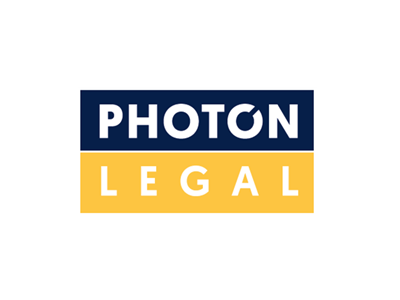 Introduction
Introduction
In the realm of music, discussions about similarities and influences between songs are not uncommon. One such case that attracted significant attention was the comparison between Marvin Gaye’s iconic track “Let’s Get It On” and Ed Sheeran’s chart-topping hit “Thinking Out Loud.” This significant case delved into the chord progressions, rhythmic patterns, production styles, and lyrical content of both songs to determine the extent of their resemblance.
Facts
The heirs of Ed Townsend, the co-writer and composer of the song ‘Let’s Get It On’, filed a lawsuit against Ed Sheeran, claiming that he unlawfully incorporated the essential elements of Marvin Gaye’s song, including harmonic progressions and melodic and rhythmic elements, in his own song “Thinking Out Loud.” They alleged that Ed Sheeran repeated these similar musical elements throughout his song and plagiarized the fundamental musical elements of Gaye’s song, specifically the building blocks found in the sheet music registered with the United States Patent and Trademark Office. The accusation pertains to the musical composition itself, rather than the lyrics or overall feel of the song.
Issue
Did Ed Sheeran plagiarize the fundamental and unique elements of the song ‘Let’s Get It On’?
Analysis
Chord progressions and rhythmic patterns:
Both “Let’s Get It On” and “Thinking Out Loud” share a foundation built upon repeating one-bar loops, featuring similar musical keys. The repetitive structure, characterized by a sequence of chords, contributes significantly to their perceived similarity. However, upon closer examination, a subtle but significant difference arises in the second chord of the loop. While the chord progressions and rhythmic shifts are commonly found in the genre, they do not align precisely between the two songs. Additionally, “Thinking Out Loud” has a slightly slower tempo as compared to ’Let’s Get It On’.
Production styles and instrumentation:
“Let’s Get It On” boasts a soulful ambiance with its relaxed atmosphere. It incorporates a wide range of instruments, including saxophone, strings, piano, guitars, harmonious backing vocals, a groovy bass line, and tight drums. In contrast, “Thinking Out Loud” adopts a more minimalistic production approach, showcasing Ed Sheeran’s solo vocals accompanied by piano, bass, and light chorus guitar. The song gradually builds up with additional harmony vocals in the second verse. The contrasting production styles emphasize the unique musical identity of each track.
Lyrical content and themes:
While both songs express themes of love in their lyrics, it is important to note that there is no direct relationship between their lyrical content. “Let’s Get It On” exudes a sensual and romantic tone, capturing the essence of physical intimacy. On the other hand, “Thinking Out Loud” explores the idea of enduring love and commitment, drawing inspiration from the personal experiences of Ed Sheeran and his longtime collaborator, Amy Wadge. Despite the shared theme, the lyrical narratives and perspectives differ significantly between the two songs.
Legal perspective:
The allegations of plagiarism surrounding “Thinking Out Loud” revolve primarily around the musical elements of the song. The heirs of Ed Townsend argued that the selection and arrangement of chords in their composition warranted legal protection. Ed Sheeran, in response, acknowledged the similarity in chord progressions but maintained that these elements are common and found in numerous other songs. The issues centered on copyright law and the interpretation of the songs’ underlying compositions, with a focus on the sheet music rather than the actual recordings.
Expert testimonies and rebuttal:
During the trial, expert witnesses and musicians provided contrasting opinions regarding the alleged similarities. Ed Sheeran passionately defended his creation, demonstrating on an acoustic guitar that while the chord progression shared similarities, it was not identical. He emphasized a significant difference in the second chord of the four-chord progression, countering claims were made by Alexander Stewart, a musicologist. Sheeran criticized Stewart’s analysis of his vocal melodies, disagreeing with the musicologist’s interpretation.
The role of evidence and jury’s decision:
Throughout the trial, evidence played a crucial role in shaping the jury’s decision-making process. One notable piece of evidence was a fan video capturing Ed Sheeran effortlessly transitioning between “Thinking Out Loud” and “Let’s Get It On” during a concert. Ed Sheeran defended this “mash-up” technique by giving examples of other pop songs that can easily transition, showcasing the flexibility and versatility of pop music. Additionally, the presentation of Marvin Gaye’s original recording of “Let’s Get It On” was limited to a computer-generated re-creation based on the deposit copy, while Ed Sheeran’s studio recording was played repeatedly during the trial.
Conclusion
The comparison between “Let’s Get It On” and “Thinking Out Loud” illustrates the intricacies involved in assessing musical similarities and alleged plagiarism. While there could be noticeable similarities in chord progressions and rhythmic patterns, the overall compositions, production styles, and lyrical content of the two songs differ significantly. This case highlights the challenges of determining originality and the interpretation of copyright law in the context of music.
Written by Asavari Mathur, Trademark and Corporate Specialist, Photon Legal.











